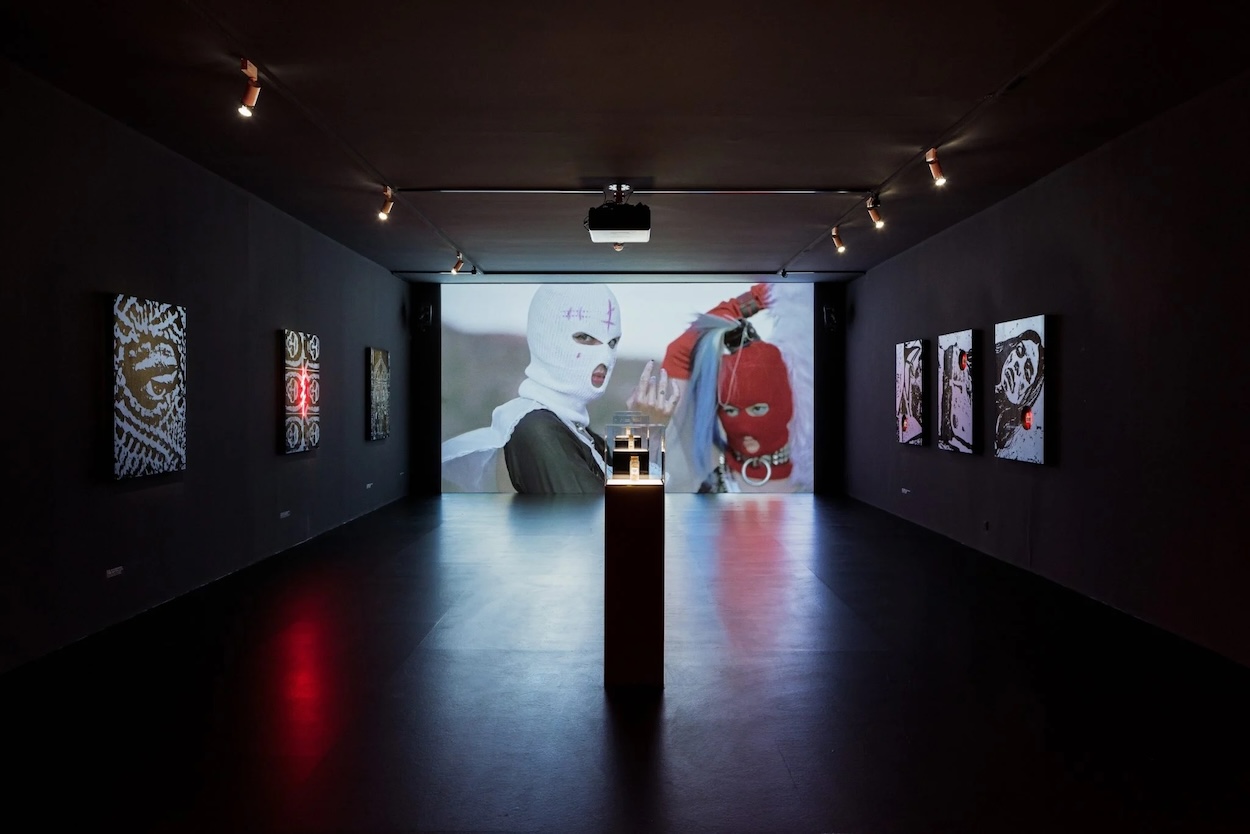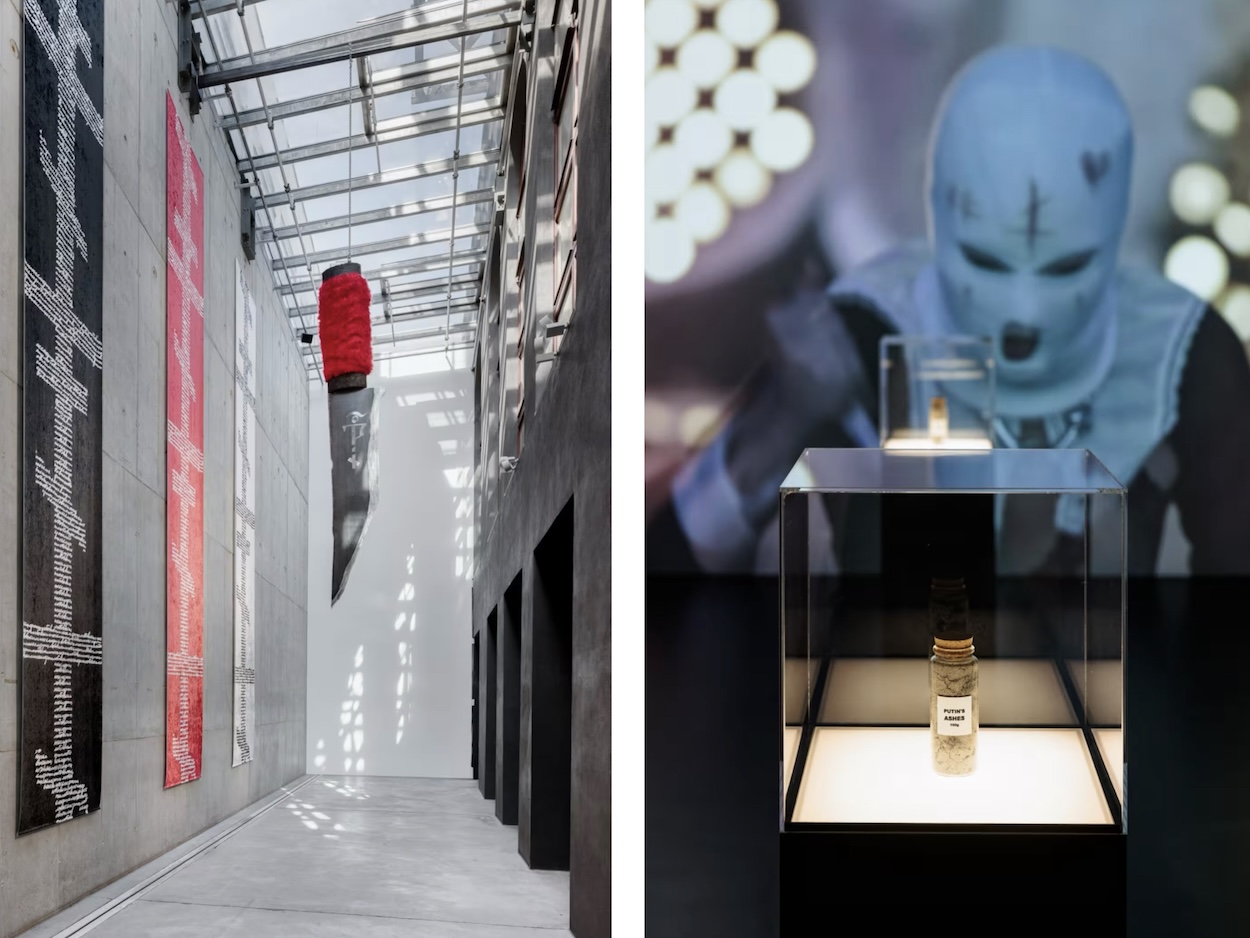Nadya Tolokonnikova’s father once gave her a piece of advice that stuck around: “a good artist is one who creates their own religion.” The founder of Russian feminist protest and performance art group Pussy Riot, it’s safe to say she took that nugget of wisdom and ran with it. In the years since Russian authorities imprisoned her for “hooliganism” after protesting Vladimir Putin’s regime with a guerrilla punk performance at Moscow’s Cathedral of Christ the Savior in 2012, she has built her entire raison d’être on defiance and provocation. Her first museum solo show, “Rage,” which opened in June at OK Center for Contemporary Art in Linz, Austria, suggests that she has also spent the past decade fearlessly manifesting her father’s words.
Speaking out against Russian politics has come at a cost—the country’s Ministry of Justice added Tolokonnikova to a list of “foreign agents” in 2021. She refuses to share her location for safety reasons and brushes up on self-defense tactics before performances. Such dedication to her art shines through “Rage.” One room contains a version of Putin’s Ashes, in which she and 11 other women burnt a portrait of the Russian dictator in a desert and collected its ashes in small vials; its walls spell out the word “riot” in 13th-century Cyrillic calligraphy. In a nod to late artist Ilya Kabakov’s “total installations,” she recreates her jail cell in another room, staging a drab wooden plank bed and even replicating the “ugly poop color” of the prison’s walls. The gesture, she says, allows her to “claim this time back and not let the Russian government own two years of my life.”



